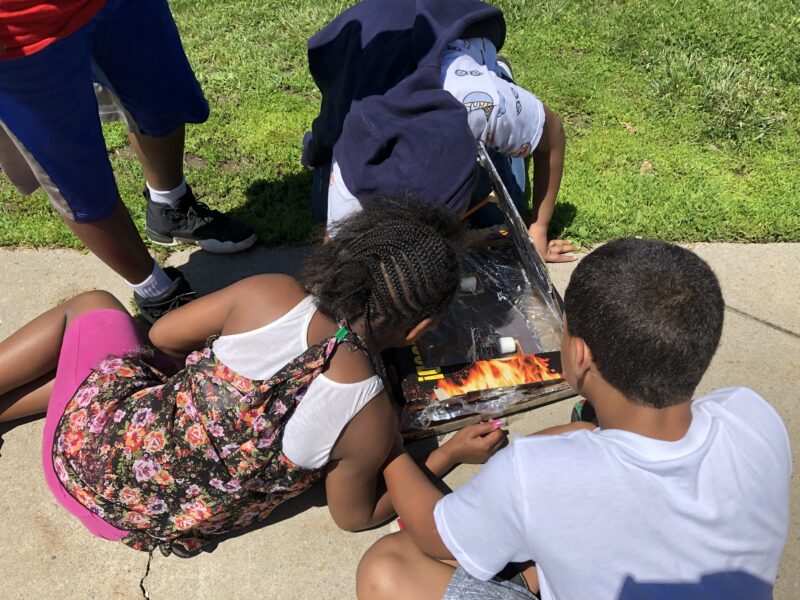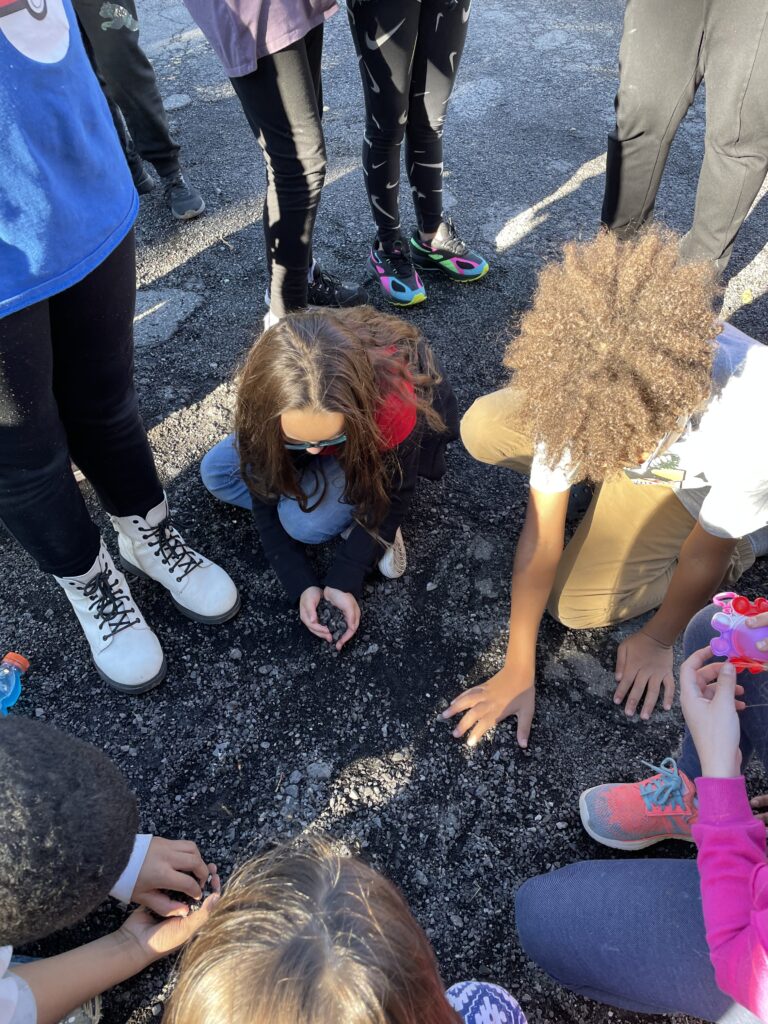I’m a lifelong scientist at heart. As a fourth grade teacher, it disappoints me that science often gets overlooked in favor of reading, writing, and math. Those subjects are absolutely essential, but I think what people overlook is that science can be a vehicle for exercising those same skills. And the best part is it’s not hard to get students interested in science. How do I get that inherent buy-in with science? I take my science instruction outdoors.
What outdoor science looks like for my students
I’ve been teaching for seven years, and for five of those years, I’ve used FOSS science. Outdoor science is actually built right into the FOSS curriculum. In each module, two or three lessons take place outside. It really is a true inquiry-oriented program. Rather than being teacher-heavy on the front end (give students information and then have them do an experiment to show what they’ve learned), it challenges students to activate prior knowledge, ask questions, and then investigate to construct their explanations (just like real scientists).
I like to take my students outside even when it’s not officially part of the instructional lesson. We go outside all the time unless it’s raining or snowing. It’s so rewarding to see my kids applying what we’ve learned in the classroom to what they see outside. They engage in the scientific process and apply crosscutting concepts on their own, as they bring me leaves or insects or notice changes in the weather or seasons.
How I prioritize community science
A huge piece of this work for me is about connecting students’ school work to their community. Our district is currently emphasizing curriculum that is culturally relevant and takes an asset-based approach to our local community. My grade-level team is doing project-based learning this year, and we’ve zeroed in on modifying a vacant lot near our school to be a rain-saving space. We plan to have students use their study of landforms to inform their designs with the goals of conserving water and keeping trash out of storm drains.
We actually have a great example of local environmental activism in our community. Our local lake has historically been highly polluted, and there have been a number of initiatives to clean it up. We plan to partner with a community organization and bring in an environmental engineer to talk to our classes. It’s our hope that students will see that they can have an impact on their community too!
Why outdoor science is 100% worth it
Taking my science instruction outdoors makes what we’re learning in the classroom that much more authentic and tangible. For students to take the next level of ownership of the knowledge they’ve gained in class, they need to see how it applies and generalizes in the broader context of the world.
Living in a urban district, my students are surrounded by concrete. Taking them outside helps them see that the principles they’re learning about aren’t entirely foreign to them. For example, we may not have rivers and mountains, but we can still see the effects of erosion and deposition. After a rainstorm, students can go out to the playground and see that the mulch has moved and find channels where water has run through.
I love when students see complex science principles at play outside in their own community. It’s gratifying for me to guide them to make those connections, and it is encouraging to see them engage so meaningfully with their natural world.



